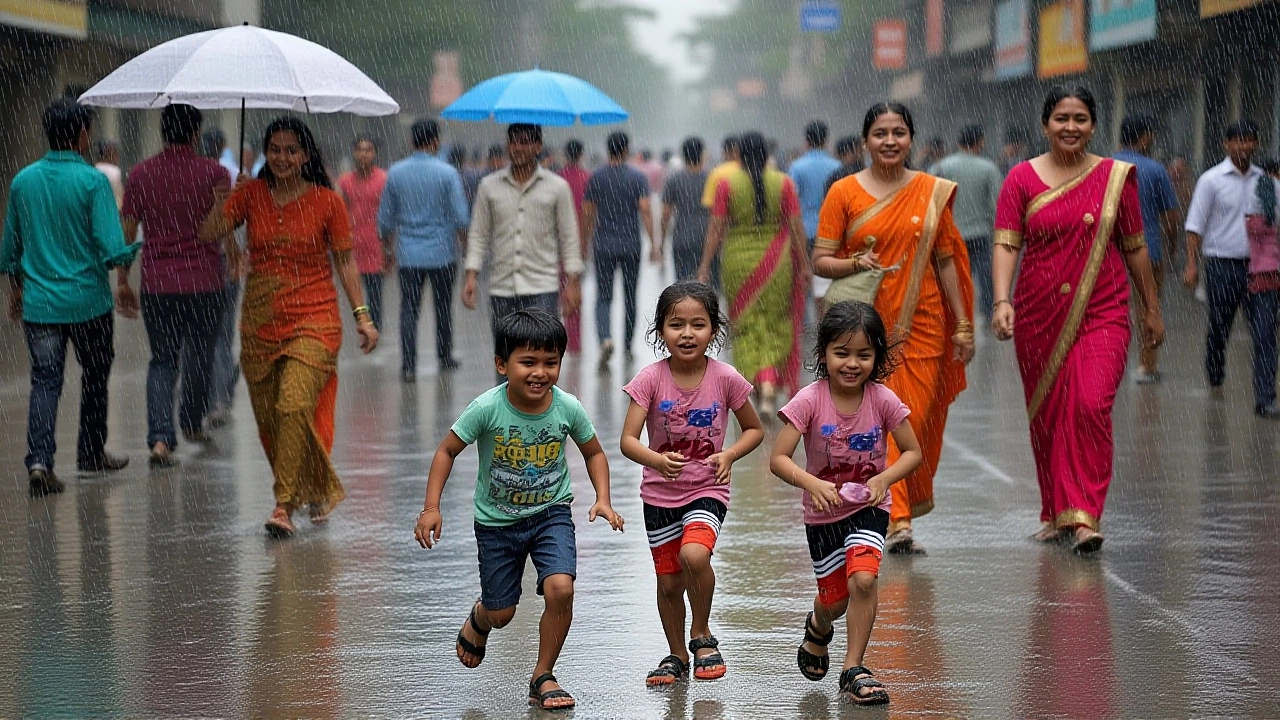Heavy Rain: Understanding the Storm
When you hear the term heavy rain, a weather event that drops a large volume of water in a short time, often leading to sudden flooding and slippery roads. Also known as torrential rain, it can turn a normal day into a hazardous one within minutes.
One of the most common companions of heavy rain is monsoon, a seasonal wind pattern that brings prolonged periods of intense rainfall to regions like South Asia and parts of Africa. The monsoon season amplifies the chances of getting caught in a downpour because the atmosphere is already saturated with moisture.
When the sky opens up, the immediate result is often flooding, the overflow of water onto land that is normally dry, disrupting traffic, homes, and businesses. Flooding can happen in minutes if drainage is poor, and it’s the main reason why heavy rain becomes a public safety concern.
Governments and weather agencies issue a weather warning, an official alert that informs the public about imminent dangerous conditions like heavy rain, strong winds, or flash floods. These warnings give people a chance to prepare, seek higher ground, or avoid travel until the storm passes.
Effective drainage system, the network of pipes, channels, and culverts designed to quickly move excess water away from streets and buildings is the backbone of flood prevention. Cities with well‑maintained drainage can handle larger rain volumes without streets turning into rivers.
From a climate perspective, heavy rain patterns are shifting. Scientists link more frequent intense storms to climate change, the long‑term rise in global temperatures that increases atmospheric moisture and fuels stronger precipitation events. This means the old “once‑in‑a‑while” rainstorms are becoming more common, and planning for them must evolve.
So what can you do when heavy rain arrives? First, check the latest weather warning on your phone or local news. Second, avoid driving through flooded roads—water can be deep and hide hazards. Third, keep an emergency kit with flashlights, batteries, and a small amount of water. Finally, let others know your plan, especially if you live in a low‑lying area where flooding is likely.
Below you’ll find stories, tips, and updates that cover everything from monsoon timing to drainage upgrades and real‑life flood experiences. Dive in to see how heavy rain affects daily life and learn practical steps to stay safe when the clouds open up.
Heavy Rain Alert Sweeps Eastern and Northern India as Delhi Braces for Triple Weather Attack
India's weather agency warns of heavy rain across West Bengal, Bihar and Odisha, while Delhi-NCR faces a triple weather attack on Oct 6, sparking travel and safety alerts.
read more
